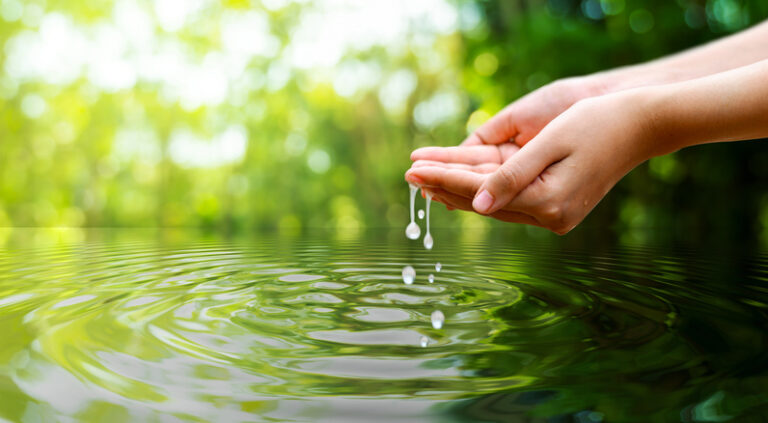Oulanka, Finland – In the remote research area in Oulanka, Finland, tubes and sensors crisscross out of a telephone booth-like measuring room. Every minute, they collect samples and measurement data from inside the snow cover, which are immediately analysed using state-of-the-art technology in the booth. The measurements aim to provide information on snow depth, temperature, density and evaporation using new technology.
The University of Oulu launched a new research group called Snow Hydrology and Modeling at the beginning of 2024. The group aims to investigate how snow cover and water resources are changing in increasingly variable conditions due to climate change. The amount of snow, rapid melting periods, and changes in frost conditions all have an impact on water resources and circulation. Understanding these changes is crucial, as water circulates in nature and the built environment.
Led by Associate Professor Pertti Ala-aho, the Snow Hydrology and Modeling research group will measure snow cover, snow conditions, and melting changes in various locations, including Oulanka and Pallas.
“The goal of snow research is to help adapt to a world where there is either too much or too little snow. With climate change and warming, warmer air masses can hold and transport more water. This will likely result in shorter snow cover periods, but possibly also exceptionally snowy winters and severe snowstorms,” said Ala-aho.
Surprising knowledge gaps
There are surprising knowledge gaps regarding water circulation in northern regions. Fundamental questions include where melted snow goes and how it affects the formation of floods. Astonishingly, about half of the spring meltwater is not from the previous winter’s snow, but rather older water.
“So, where does a stream or river get its water – is it primarily fed by meltwater and rainfall, or is its source in the soil and groundwater? What role does changing snow cover play in filling water reservoirs? It is certain that with climate change, water circulation phenomena are undergoing rapid changes. To understand these changes and prepare for them, we need to rapidly advance intelligent measurement and modelling techniques,” said Ala-aho.
By combining new measurement technology with Finland’s existing snow measurement network, valuable insights into the significance of snow for northern water resources can be obtained. “The development of environmental measurement technology has been very fast, but progress has not been fully utilized in snow research. The aim is less snow shovelling and more high-quality automatic measurements,” envisions Ala-aho.
The Snow Hydrology and Modeling research group’s work in combining water engineering research and digitalization development is supported by the Finnish Water and Environmental Engineering Support Foundation (Maa- ja vesitekniikan tuki ry). The group’s work is linked to Oulun University’s new flagship research program, “Digital Waters,” which enables the digital modelling of entire water systems, known as digital twins. Digital twins of water resources can be used to model and manage water usage. The digitalization of water resources improves water management and safety, particularly during flood events. Digital water management also helps balance the goals of industry, energy, agriculture, forestry, and construction sustainably.
Snow volume and melting are measured inside the snowpack and evaporation on top of the snowpack
At the University of Oulu Oulanka Research Station, located at Kuusamo, Finland, fiber optic cables are tested to measure temperature with high precision. The cables, approximately 100 meters long and as thin as a clothesline, are being tested in the vicinity of the measurement booth. This winter serves as a trial period for the equipment, as preparations are made for the installation of cables measuring one to two kilometers in the field next winter. The goal is to measure temperature beneath snowpacks and in different layers across a wide area, potentially even an entire catchment area. Temperature data provides valuable information about snow accumulation throughout the winter and helps understand the speed of melting phases.
“We aim to identify areas where temperatures behave similarly, enabling us to enhance monitoring and predictability in the future,” explains Maiju Ylönen, a doctoral researcher. The research is also being conducted in Pallastunturi and Sodankylä, where drones are utilised to map snow cover characteristics in addition to temperature cables.
The evaporation of snow during winter and spring is one of the least understood phenomena in snow hydrology. “Determining whether snow evaporates or melts is a challenging task. Especially in spring, both processes occur simultaneously, but current measurements only show the combined effect: a decrease in snow cover. Understanding whether the moisture in the snow rises into the atmosphere or melts into rivers and groundwater is crucial for flood prediction and assessing groundwater formation,” adds Ala-aho.
The warm measurement booth in Oulanka’s peatland conceals state-of-the-art equipment used to analyze water vapor both within and above the snowpack. The focus of the measurements is the isotopic composition of the snowpack and the water evaporating from it. Isotopes act as fingerprints of water. Combined with other meteorological measurements in Oulanka, the isotopes provide new ways to estimate the amount of snow evaporation and the underlying processes.
“The snow cover in northern regions affects global temperature and regulates climate. The loss of snow through melting or evaporation plays a crucial role in various atmospheric and ecosystem processes. However, the factors that control evaporation fluxes and their magnitude are not well understood. Further research is needed to better predict snow evaporation into the atmosphere and the reduction of snow cover,” describes Shaakir Dar, a Postdoctoral Researcher.









